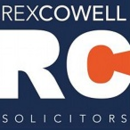Payment for dilapidations
Virtually all leases have clauses which stipulate that when the lease comes to an end, the tenant must leave the premises in the same condition as they were in when they entered them, and the negotiations over the termination of a lease will often involve a payment by the outgoing tenant to take account of the dilapidations.
In principle, the payment from the tenant to the landlord is to put the landlord back in the position it was in at the commencement of the lease: restoring the asset (the leased premises) to its former condition.
But how should such a payment be accounted for? Should it be treated as income in the hands of the landlord, and thus subject to taxation under the rules of income tax or corporation tax applying to income, or as a capital receipt and thus subject to the rules which apply to capital gains?
The case of Thornton v Revenue and Customs [2017] addressed this issue. It involved a landlord who let flats to a housing association. At the end of the lease, the housing association agreed to pay the landlord a dilapidations charge of £250,000. The landlord treated the receipt as a receipt of capital. HM Revenue and Customs took a different view, holding that it was a receipt of income.
The question turned on what gave rise to the legal right to receive the payment, which, as a matter of fact, was the agreement reached following negotiations between the landlord and the housing association. The building had become unfit for human habitation and required renovation before it could be let again.
The payment was made because the landlord had suffered a permanent diminution in the capital value of his asset and its purpose was to restore that value. It was, therefore, a capital receipt, not an income receipt. Had it been merely to provide income for the landlord during the period the flats could not be let, it would have been an income receipt.
In similar circumstances, the tax treatment of any such payment will depend on the facts of the individual case, and the wording of the agreement under which the payment is made will be a critical piece of evidence.
[edit] Related articles on Designing Buildings Wiki
Featured articles and news
RTPI leader to become new CIOB Chief Executive Officer
Dr Victoria Hills MRTPI, FICE to take over after Caroline Gumble’s departure.
Social and affordable housing, a long term plan for delivery
The “Delivering a Decade of Renewal for Social and Affordable Housing” strategy sets out future path.
A change to adoptive architecture
Effects of global weather warming on architectural detailing, material choice and human interaction.
The proposed publicly owned and backed subsidiary of Homes England, to facilitate new homes.
How big is the problem and what can we do to mitigate the effects?
Overheating guidance and tools for building designers
A number of cool guides to help with the heat.
The UK's Modern Industrial Strategy: A 10 year plan
Previous consultation criticism, current key elements and general support with some persisting reservations.
Building Safety Regulator reforms
New roles, new staff and a new fast track service pave the way for a single construction regulator.
Architectural Technologist CPDs and Communications
CIAT CPD… and how you can do it!
Cooling centres and cool spaces
Managing extreme heat in cities by directing the public to places for heat stress relief and water sources.
Winter gardens: A brief history and warm variations
Extending the season with glass in different forms and terms.
Restoring Great Yarmouth's Winter Gardens
Transforming one of the least sustainable constructions imaginable.
Construction Skills Mission Board launch sector drive
Newly formed government and industry collaboration set strategy for recruiting an additional 100,000 construction workers a year.
New Architects Code comes into effect in September 2025
ARB Architects Code of Conduct and Practice available with ongoing consultation regarding guidance.
Welsh Skills Body (Medr) launches ambitious plan
The new skills body brings together funding and regulation of tertiary education and research for the devolved nation.
Paul Gandy FCIOB announced as next CIOB President
Former Tilbury Douglas CEO takes helm.
UK Infrastructure: A 10 Year Strategy. In brief with reactions
With the National Infrastructure and Service Transformation Authority (NISTA).
























Comments